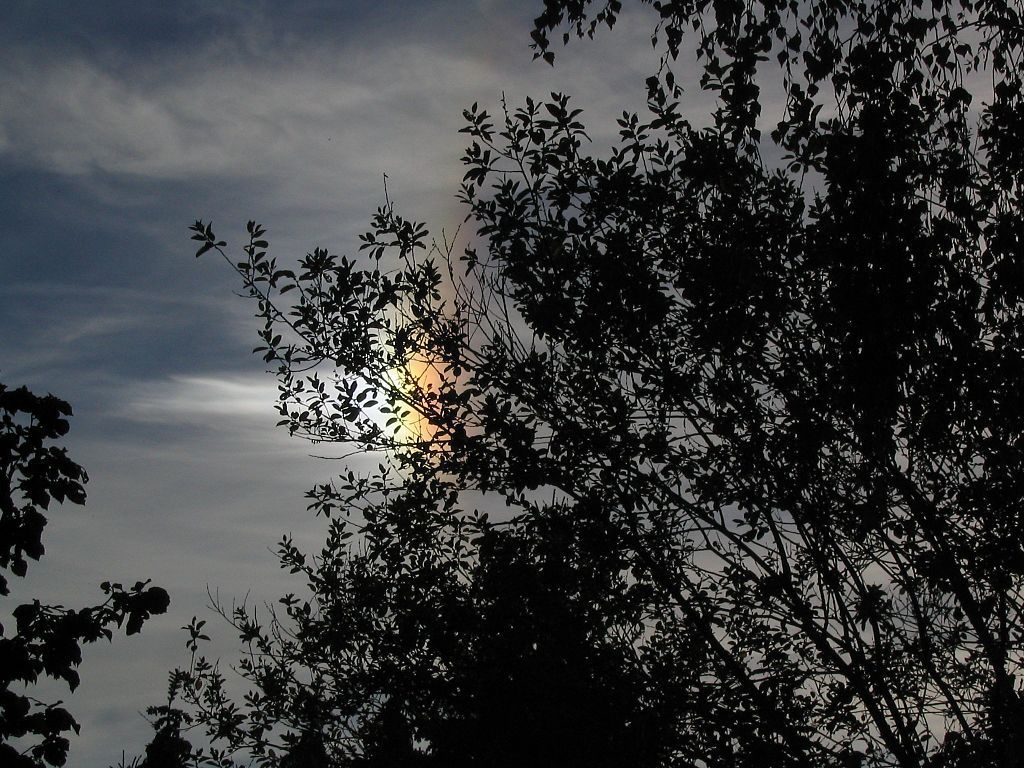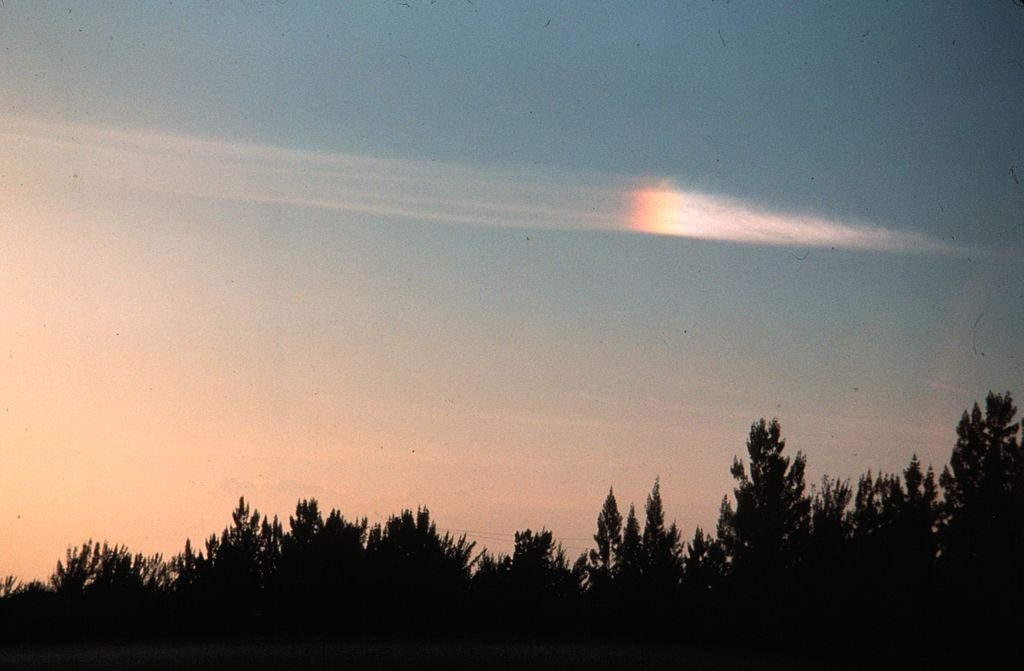
Winter is an excellent time to see sun dogs, one of the many atmospheric optical phenomena caused by ice crystals in the air.
Sun dogs, also called parhelia, are bright spots to the right and left of the sun on the same horizontal level. If you know how to measure angles in the sky you’ll find them at 22 degrees from the sun, sometimes with rainbow colors.
Sun dogs are best seen when the sun is near the horizon but in Pittsburgh clouds often obscure one sun dog or even the sun itself. Pictured above is a lefthand sun dog, pictured below is one on the right. You can tell, even without seeing the sun, because the red end of the rainbow is nearest the sun.

If you’re really lucky you’ll see the sun between two very bright sun dogs. The “three suns” effect shows the origin of their name in Greek mythology — Zeus (the sun) walking his two dogs.

In the old days, three suns were considered an omen and not a good one. During the Wars of the Roses (England’s civil wars in the late 1400’s), the future king had to convince his panicky troops that three suns meant good news.
The prelude to the Battle of Mortimer’s Cross in Herefordshire, England in 1461 is supposed to have involved the appearance of a halo display with three “suns”. The Yorkist commander, later Edward IV of England, convinced his initially frightened troops that it represented the three sons of the Duke of York, and Edward’s troops won a decisive victory. The event was dramatized by William Shakespeare in King Henry VI, Part 3.
— Wikipedia entry for Sun dog
Look up for birds on a cloud-skimmed winter day and you may see “dogs” in the sky.
(photos from Wikimedia Commons; click on the captions to see the originals)